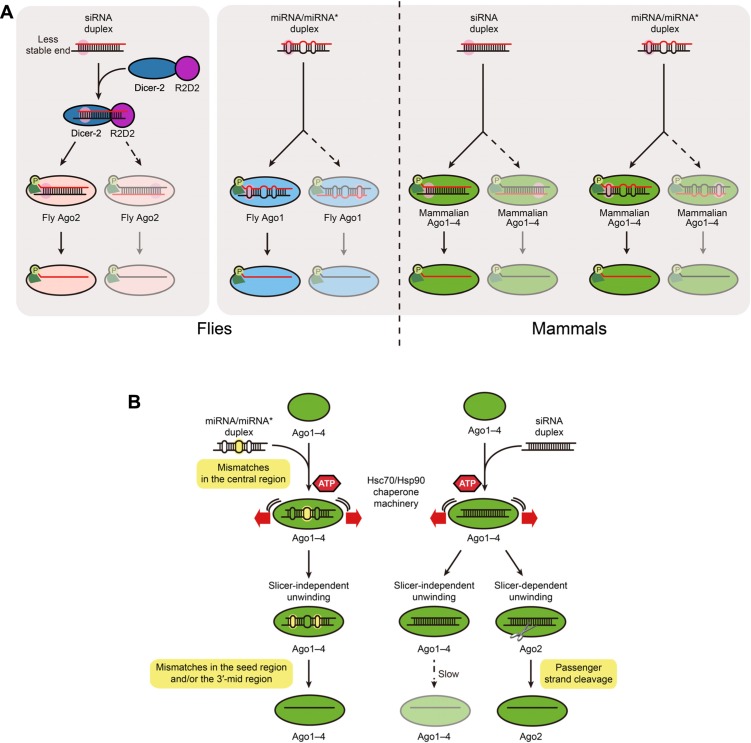FIGURE 1.
(A) miRNA/miRNA* and siRNA duplexes are functionally asymmetric. In both flies and mammals small RNA duplexes are preferentially loaded into Ago proteins with their less stable end (pink) toward the phosphate-binding pocket of the protein (light green), which results in the selection of the red strand as the guide strand. If the duplex is occasionally loaded in the opposite orientation, the black strand functions as the guide. The more asymmetric the duplex is, the more likely the red strand is exclusively selected as the guide. Besides Ago proteins themselves and the Hsc70/Hsp90 chaperone machinery (B), no other factors are known to be required for asymmetric assembly of mammalian Ago1–4-RISC or fly Ago1 RISC. In contrast, in flies the Dicer-2/R2D2 heterodimer senses the asymmetry of siRNA duplexes and such binding is a prerequisite for Ago2-RISC assembly. (B) In mammals, central mismatches are preferred for RISC loading, whereas mismatches in the seed and 3′-mid regions promote slicer-independent unwinding. Such mismatches are highlighted in yellow. Duplex loading requires ATP and the Hsc70/Hsp90 chaperone machinery, while both slicer-dependent unwinding and slicer-independent unwinding do not.

